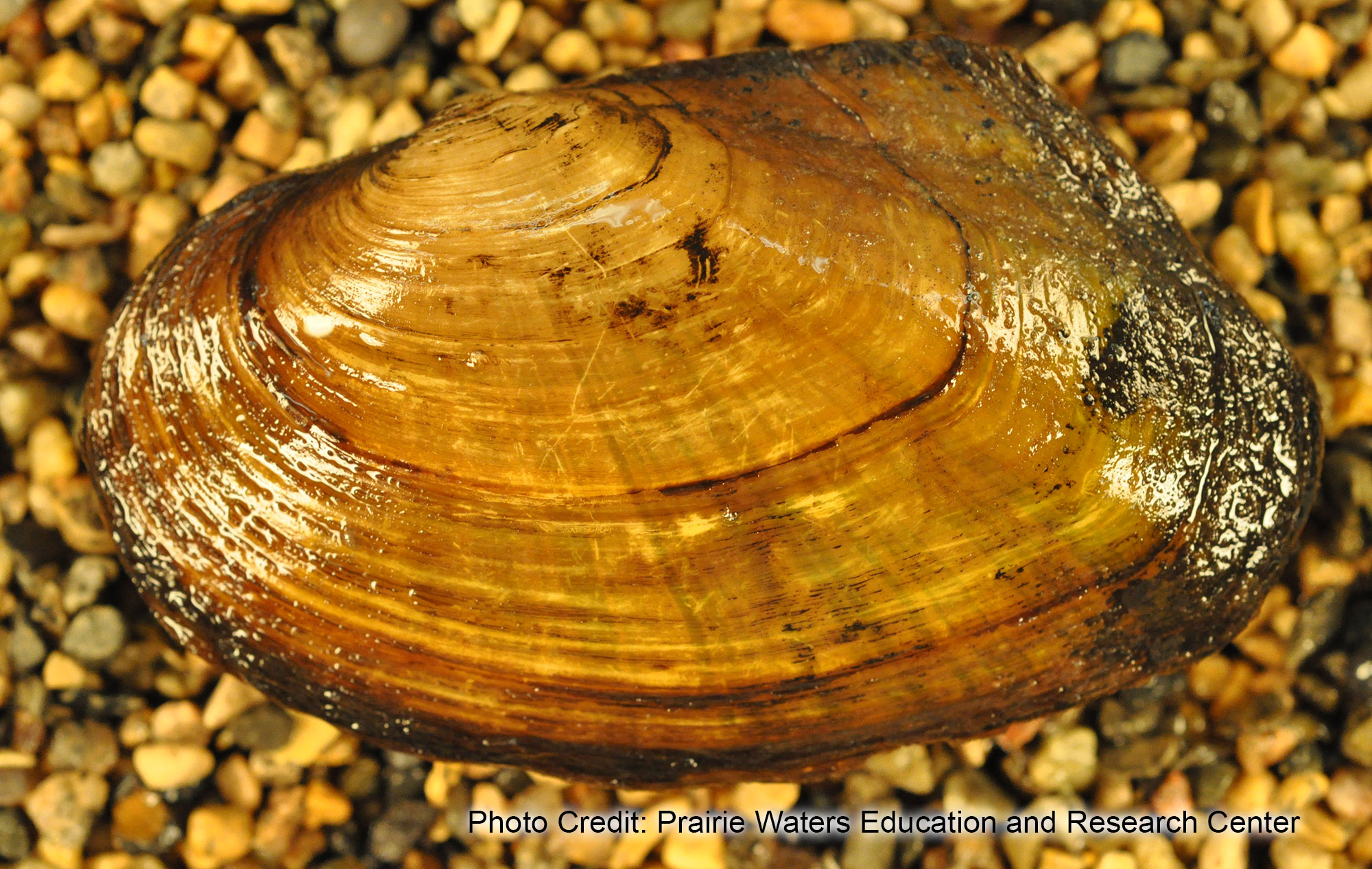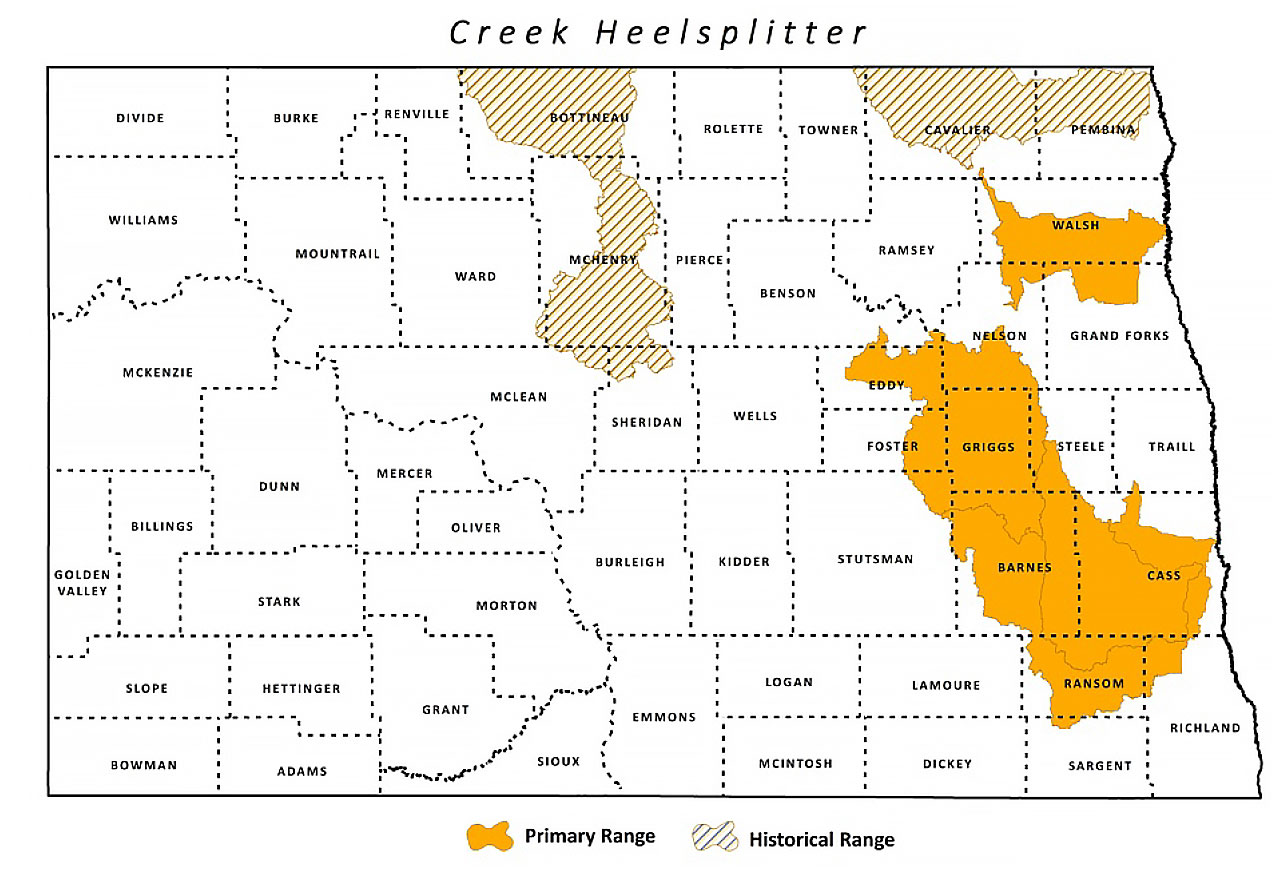
Creek Heelspliter
| Scientific Name | Lasmigona compressa |
|---|---|
| General Description | Shell relatively thin, flattened, and elongated up to 3 inches in length. Yellow in color with green rays extending from back along top. Darker in larger shells. |
| Status | Year-round resident. |
| Abundance | Rare. |
| Primary Habitat | Found in the Pembina, Forest, Wintering and Sheyenne rivers. Generally in headwaters of small streams with sandy bottoms. |
| Federal Status | None. |
| Reason for Designation | Changes in land use in around these rivers, most notably agriculture, and impoundment of river systems have impacted beds of these mussels. |
Images


(Photos courtesy of Prairie Waters Education and Research Center - Valley City University)
Locations and Conditions of Key Habitat
Preferred Habitat
Found in headwaters of small and medium-sized streams.
Key Areas and Conditions for Creek Heelspliter in North Dakota
The Creek Heelspliter is found most frequently in the Wintering River. It is also found in the Pembina, Forest, and Sheyenne rivers.
Problems Which May Affect this Species
Habitat
Impoundment of the Red River and its tributaries have changed the flow regime and increased sediment deposits making many areas in the river unsuitable to the Creek Heelspliter. Impoundments also block host fish movement necessary for this species’ reproduction and dispersal. Agricultural practices within the basin have reduced suitable habitat in the river. Runoff from treated fields into the river decreases water quality. Ditches used to drain wetlands contribute agricultural run-off and sedimentation to the Red River and its tributaries.
Other Natural or Manmade Factors
Release of water from Devils Lake may negatively the water chemistry in the Sheyenne River.
Research and Survey Efforts
Current Research or Surveys
- No current research or survey efforts are on-going in this species range.
Previous Research or Surveys
- Cvancara conducted a state-wide survey of the mussels of North Dakota in 1978.
- The North Dakota Game and Fish Department revisited Cvancara’s sites in 1990.
- Valley City State University revisited Cvancara’s sites and surveyed additional sites in 2008.
- The NDDH conducted freshwater mussel surveys for state waters as a segment of its Index of Biotic Integrity (IBI) work.
Additional Research or Surveys Needed
- A monitoring protocol for mussel species has been developed for the North Dakota Game and Fish Department under the SWG program. Implementation of this monitoring protocol is a future goal.
Management Recommendations
- Develop buffers along riparian areas.
- Work with partners to reduce the use of chemical near waterways.
- Work with partners to reduce wetland drainage.
- Remove river impoundments where possible.
- Work with partners to maintain instream flows.
Monitoring Plans
A monitoring protocol has been developed for the North Dakota Game and Fish Department under the SWG program. Implementation of this monitoring protocol is a future goal.
2005-2015 Progress
Upgraded to the a Level I Species of Conservation Priority in the 2015 revision of the Wildlife Action Plan. SWG T- 24-R A Two Phase Population Survey of Mussels in North Dakota Rivers provided important information on the distribution of this species. Work to implement a monitoring protocol for mussels species will is a goal of the revised Wildlife Action Plan.

Note: A listing of works consulted when compiling the information on this page may be found in the 2015 State Wildlife Action Plan.
